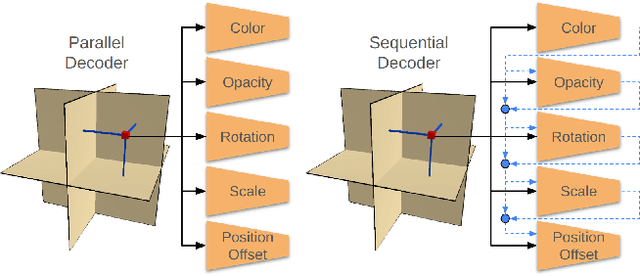Arian Beckmann
EEG-Features for Generalized Deepfake Detection
May 14, 2024

Abstract:Since the advent of Deepfakes in digital media, the development of robust and reliable detection mechanism is urgently called for. In this study, we explore a novel approach to Deepfake detection by utilizing electroencephalography (EEG) measured from the neural processing of a human participant who viewed and categorized Deepfake stimuli from the FaceForensics++ datset. These measurements serve as input features to a binary support vector classifier, trained to discriminate between real and manipulated facial images. We examine whether EEG data can inform Deepfake detection and also if it can provide a generalized representation capable of identifying Deepfakes beyond the training domain. Our preliminary results indicate that human neural processing signals can be successfully integrated into Deepfake detection frameworks and hint at the potential for a generalized neural representation of artifacts in computer generated faces. Moreover, our study provides next steps towards the understanding of how digital realism is embedded in the human cognitive system, possibly enabling the development of more realistic digital avatars in the future.
Gaussian Splatting Decoder for 3D-aware Generative Adversarial Networks
Apr 16, 2024



Abstract:NeRF-based 3D-aware Generative Adversarial Networks (GANs) like EG3D or GIRAFFE have shown very high rendering quality under large representational variety. However, rendering with Neural Radiance Fields poses challenges for 3D applications: First, the significant computational demands of NeRF rendering preclude its use on low-power devices, such as mobiles and VR/AR headsets. Second, implicit representations based on neural networks are difficult to incorporate into explicit 3D scenes, such as VR environments or video games. 3D Gaussian Splatting (3DGS) overcomes these limitations by providing an explicit 3D representation that can be rendered efficiently at high frame rates. In this work, we present a novel approach that combines the high rendering quality of NeRF-based 3D-aware GANs with the flexibility and computational advantages of 3DGS. By training a decoder that maps implicit NeRF representations to explicit 3D Gaussian Splatting attributes, we can integrate the representational diversity and quality of 3D GANs into the ecosystem of 3D Gaussian Splatting for the first time. Additionally, our approach allows for a high resolution GAN inversion and real-time GAN editing with 3D Gaussian Splatting scenes.
Fooling State-of-the-Art Deepfake Detection with High-Quality Deepfakes
May 16, 2023Abstract:Due to the rising threat of deepfakes to security and privacy, it is most important to develop robust and reliable detectors. In this paper, we examine the need for high-quality samples in the training datasets of such detectors. Accordingly, we show that deepfake detectors proven to generalize well on multiple research datasets still struggle in real-world scenarios with well-crafted fakes. First, we propose a novel autoencoder for face swapping alongside an advanced face blending technique, which we utilize to generate 90 high-quality deepfakes. Second, we feed those fakes to a state-of-the-art detector, causing its performance to decrease drastically. Moreover, we fine-tune the detector on our fakes and demonstrate that they contain useful clues for the detection of manipulations. Overall, our results provide insights into the generalization of deepfake detectors and suggest that their training datasets should be complemented by high-quality fakes since training on mere research data is insufficient.
 Add to Chrome
Add to Chrome Add to Firefox
Add to Firefox Add to Edge
Add to Edge